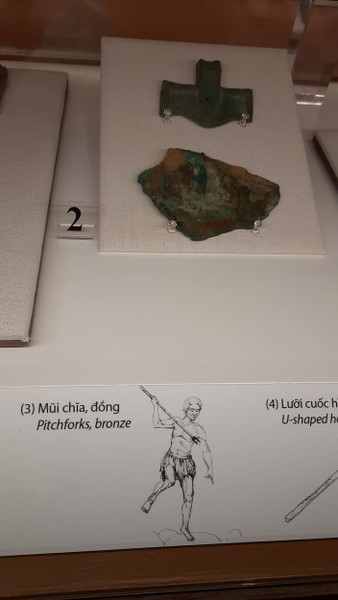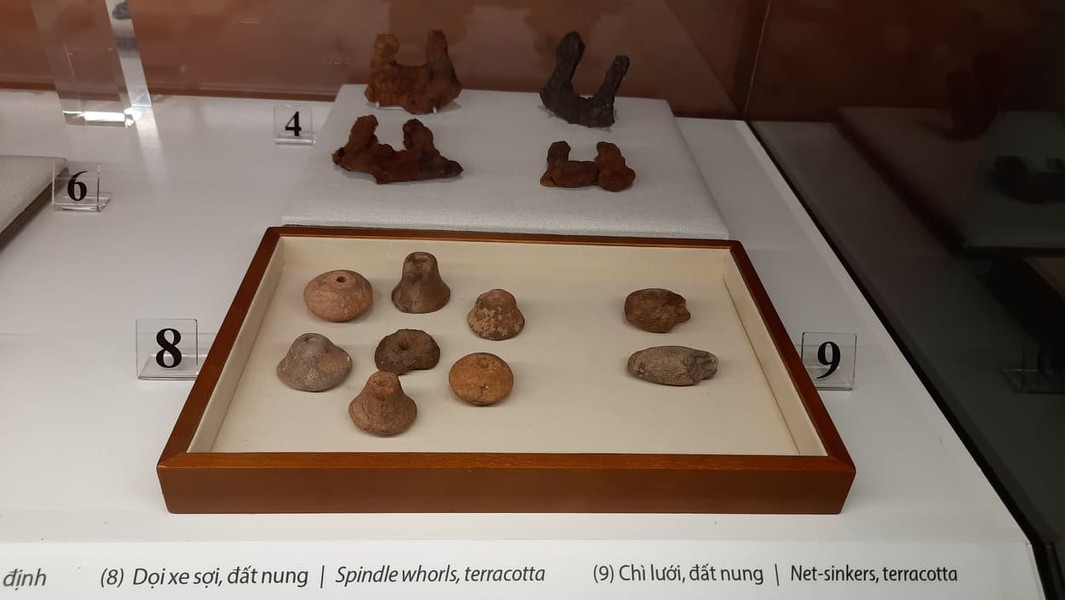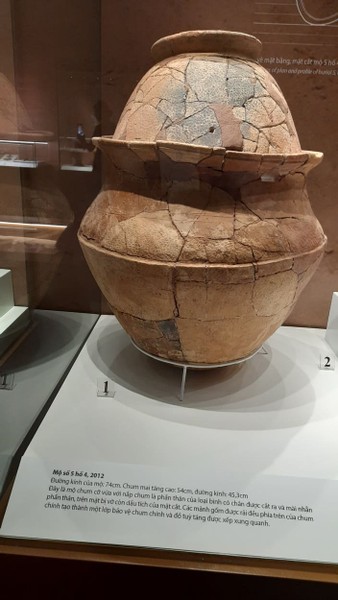
This is a medium-sized jar tomb with a jar lid, the body of a jar with legs cut out and the body smoothed, with traces of the cut surface remaining on the broken surface. Pottery shards are spread evenly above the main jar, forming a protective layer for the main jar and burial objects arranged around it.
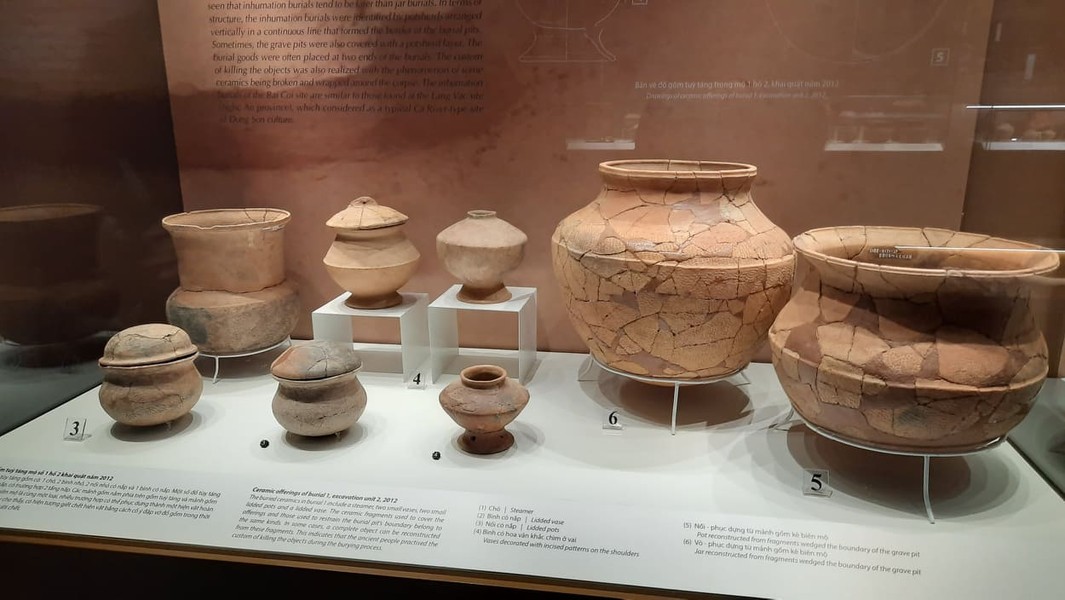
Burial items include beds, small jars, and small pots
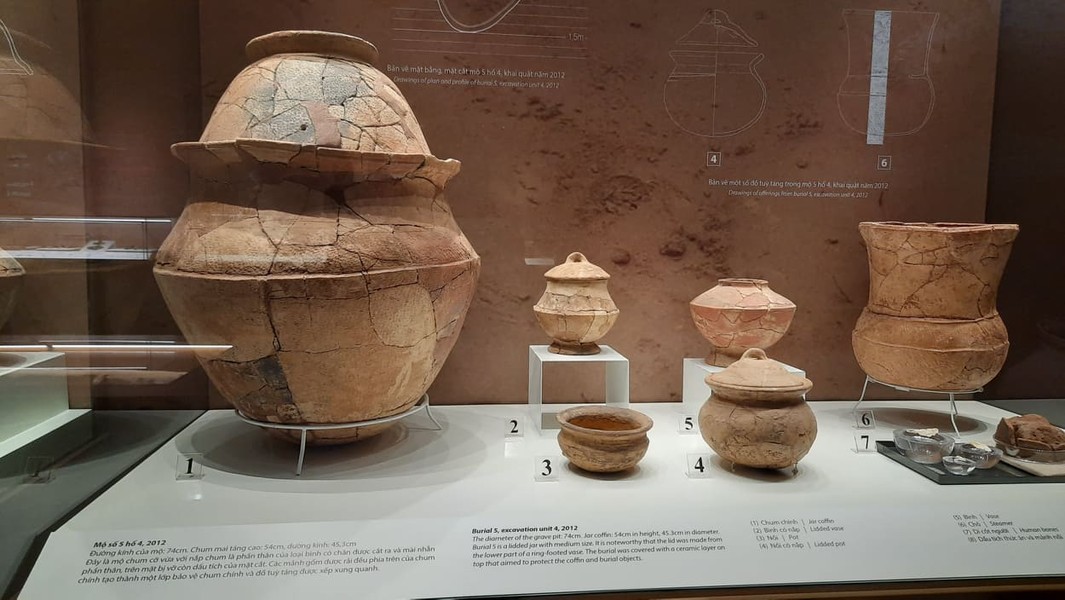
In addition to ceramics with typical Sa Huynh designs, techniques, and patterns, there are also ceramics originating from Dong Son culture such as: pots, vases with carded pattern, ceramic jars…
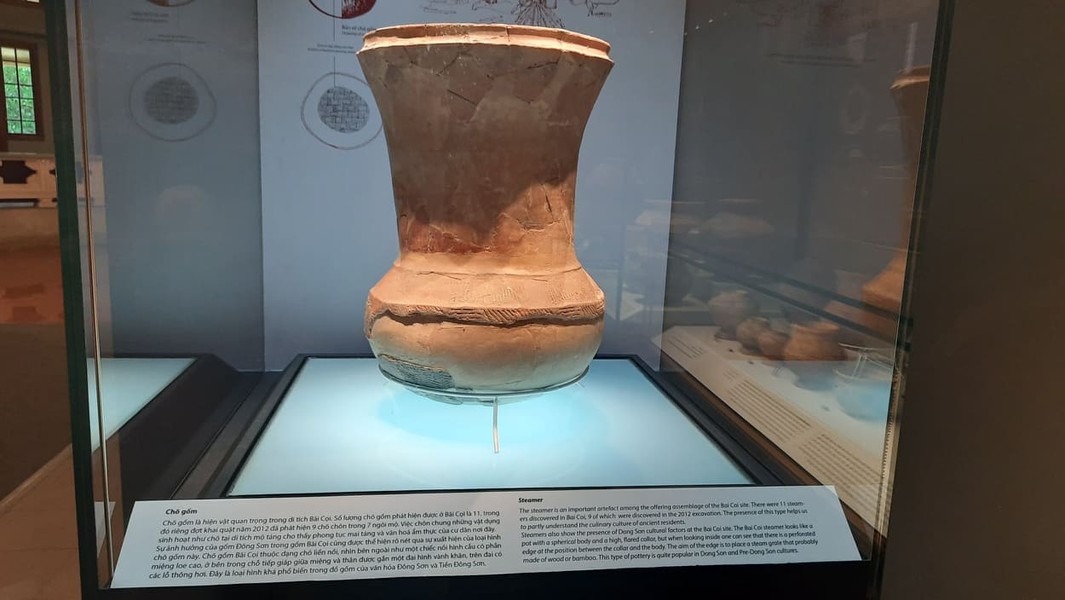
Pottery is an important artifact in Bai Coi relic. The number of ceramic pots discovered in Bai Coi is 11. Of these, the 2012 excavation alone discovered 9 pots buried in 7 tombs. The burial of household items such as jars at burial relics shows the burial customs and culinary culture of the residents. The influence of Dong Son pottery in Bai Coi pottery is also clearly shown through the appearance of this pottery pot.
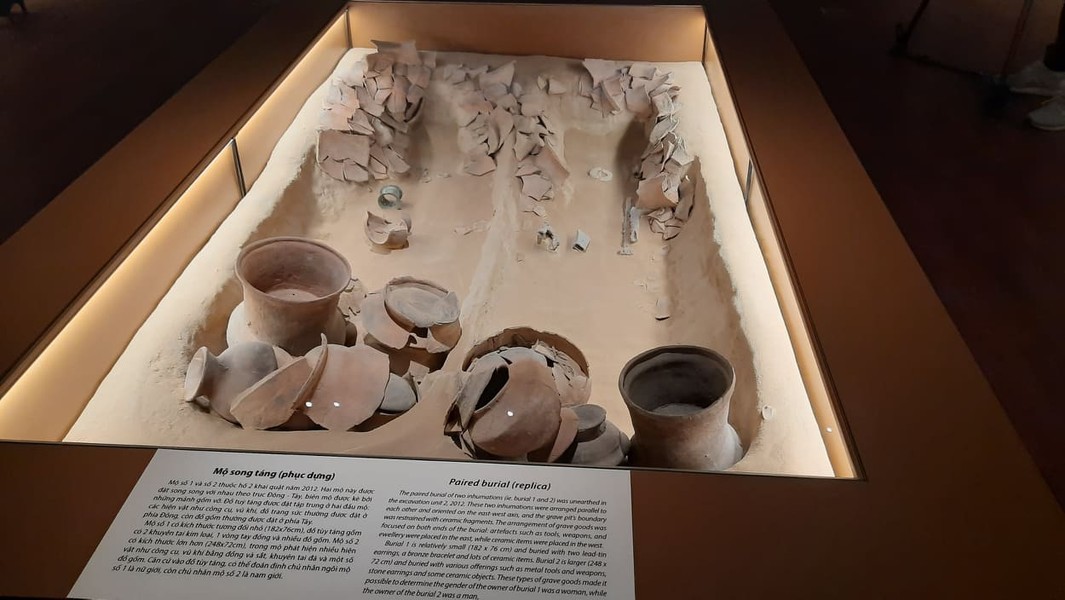
At the thematic exhibition “Bai Coi – A meeting place of cultures” recently opened at the National Museum of History, a double burial tomb was restored. These two graves are placed parallel to each other along the East – West axis, the border of the grave is embanked with broken ceramic pieces. Burial items are placed at both ends of the grave. Artifacts such as tools, weapons, and jewelry are often placed in the East, while ceramics are often placed in the West.
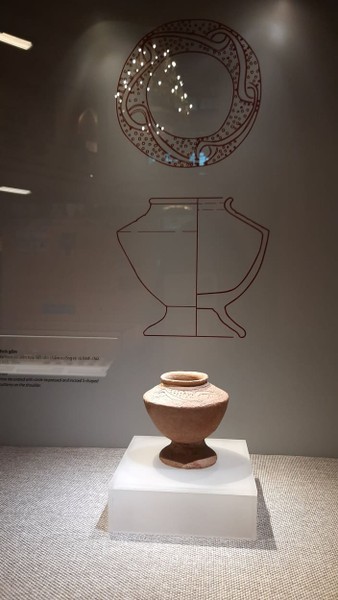
The ceramic vase was found with a dotted border and an engraved S shape
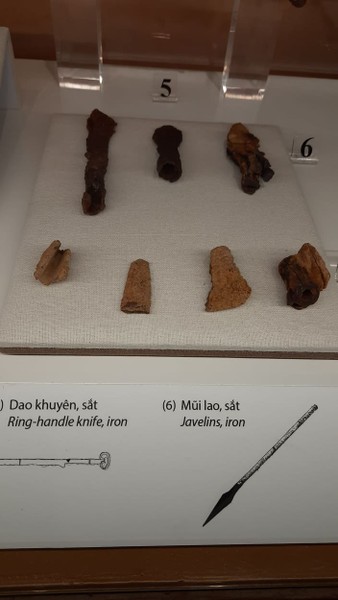
Bronze ax and bronze plowshare

